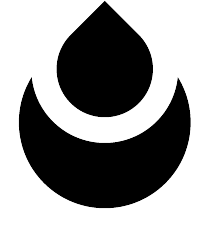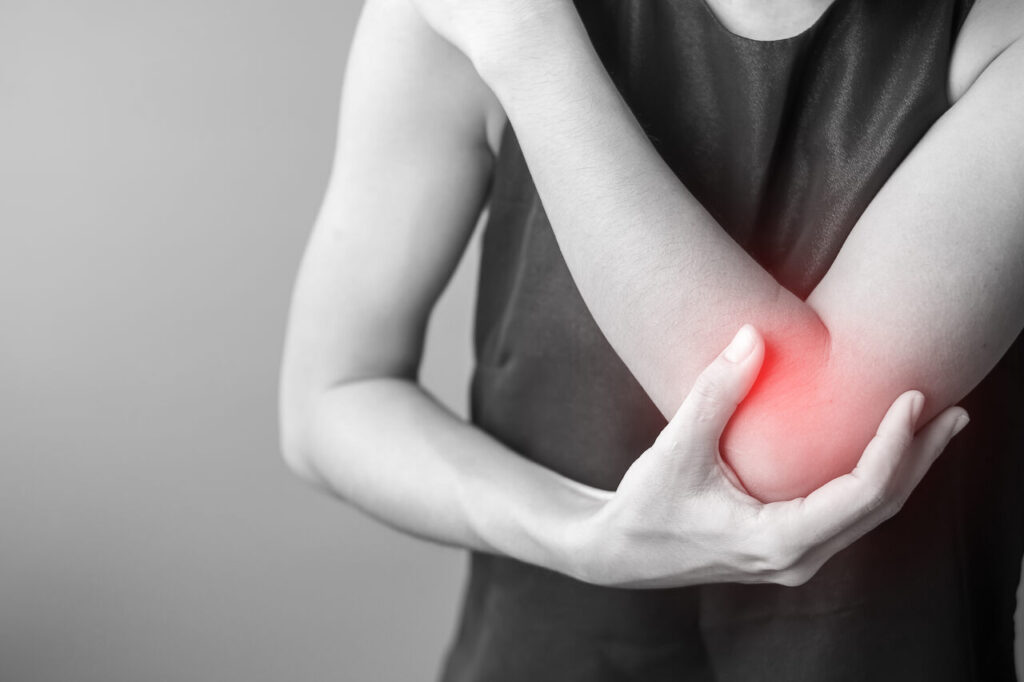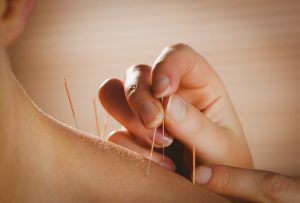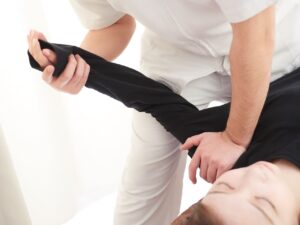Understanding Tennis Elbow
What is Tennis Elbow?
Tennis elbow, medically known as lateral epicondylitis, is a condition that causes pain around the outer part of your elbow. Although often associated with tennis players, this condition can affect anyone who overuses their forearm muscles. The pain typically results from inflammation or micro-tears in the tendons that attach to the lateral epicondyle, a bony prominence on the outside of your elbow.
Causes of Tennis Elbow
Tennis elbow is caused by repetitive motions and overuse of the forearm muscles and tendons. Engaging in activities that require repetitive wrist extension or gripping can lead to this condition. Some common causes include:
- Sports Activities: Especially those involving rackets, like tennis or squash.
- Occupational Tasks: Activities like painting, carpentry, and typing.
- Repetitive Movements: Repeated use of hand tools or any activity causing strain to the forearm muscles.
Understanding what triggers tennis elbow can help you adopt preventive measures and seek appropriate physiotherapy treatments. You can find more about preventive measures in our section on physiotherapy for sports injuries.
Symptoms of Tennis Elbow
The symptoms of tennis elbow vary from mild discomfort to severe pain. These symptoms usually develop gradually and can worsen over time if left untreated. Key symptoms include:
| Symptom | Description |
|---|---|
| Pain and Tenderness | Pain on the outer part of your elbow that may radiate to the forearm and wrist. |
| Weak Grip | Reduced grip strength, making it difficult to hold objects. |
| Burning Sensation | A burning sensation in the outer part of the elbow, especially during or after activity. |
| Stiffness | Stiffness in the elbow, particularly in the morning. |
Recognizing these symptoms early can help you seek timely physiotherapy interventions, which play a crucial role in managing and recovering from tennis elbow. For comprehensive physiotherapy guidance, visit our article on physiotherapy treatment options.
Tennis elbow can significantly impact your daily activities and overall quality of life. Understanding its causes and symptoms is the first step towards effective treatment and management. To learn more, explore our related articles on physiotherapy for shoulder pain and physiotherapy for carpal tunnel syndrome.
Importance of Physiotherapy
The Role of Physiotherapy in Treating Tennis Elbow
Physiotherapy plays a crucial role in managing and treating tennis elbow, also known as lateral epicondylitis. When you suffer from this condition, tendons in your elbow are overloaded, usually by repetitive movements of the wrist and arm. A physiotherapist helps by designing a treatment plan that targets specific needs and conditions of your elbow. This includes a combination of exercises, manual therapy, and the use of various modalities to expedite recovery.
The primary goal of physiotherapy for tennis elbow is to reduce pain, improve function, and promote healing of the affected tendons. The therapist conducts a thorough assessment to identify the severity of the condition and then crafts a personalized treatment regimen accordingly. You can find more about other physiotherapy treatments at our physiotherapy treatment page.
Benefits of Physiotherapy for Tennis Elbow
Effective physiotherapy for tennis elbow offers numerous benefits that aid in a speedy and robust recovery. Here are some key advantages:
-
Pain Relief: Physiotherapists employ various techniques, such as manual therapy, to alleviate pain in the affected area.
-
Increased Strength and Flexibility: Through targeted stretching and strengthening exercises, physiotherapy helps restore the elbow’s strength and flexibility, improving overall functionality.
-
Inflammation Reduction: Techniques like ice therapy and ultrasound therapy are used to decrease inflammation, promoting faster healing.
-
Improved Blood Circulation: Manual therapy and exercises enhance blood flow to the affected tendons, facilitating the body’s natural healing processes.
| Physiotherapy Benefit | Description |
|---|---|
| Pain Relief | Reduces discomfort through manual therapy techniques. |
| Strength & Flexibility | Enhances elbow’s strength and mobility. |
| Inflammation Reduction | Uses modalities like ice therapy. |
| Blood Circulation | Improved through targeted exercises and manual therapy. |
You can gain more insights into physiotherapy techniques from our physiotherapy exercises section.
Physiotherapy methods are tailored to individual needs, making it an effective approach for diverse cases, from severe conditions to mild discomforts. It’s essential to have regular follow-ups and maintain a proactive approach toward recovery to prevent future injuries—a strategy elaborated in our section on physiotherapy for sports injuries.
Consider visiting a physiotherapy clinic to start a customized treatment plan.
Effective Physiotherapy Techniques
In managing tennis elbow, specific physiotherapy techniques can play a vital role in alleviating pain and restoring function. These techniques include stretching and strengthening exercises, manual therapy methods, and the use of assistive devices.
Stretching and Strengthening Exercises
Engaging in targeted stretching and strengthening exercises is crucial for tennis elbow recovery. These exercises help improve flexibility, strengthen the muscles around the elbow, and reduce strain on the tendons.
Stretching Exercises
- Wrist Flexor Stretch: Hold your arm straight out with the palm facing up, then gently pull your fingers back towards your body using your other hand.
- Wrist Extensor Stretch: Extend your arm with the palm facing down and use the other hand to gently pull your fingers down and back.
- Elbow Extension Stretch: Straighten your arm and slowly bend your wrist up and down.
Strengthening Exercises
- Finger Stretch: Squeeze a stress ball or putty in your hand and release slowly.
- Wrist Extension: Hold a lightweight dumbbell in your hand, palm down, and slowly lift your hand upwards.
- Wrist Flexion: Hold a lightweight dumbbell in your hand, palm up, and slowly lift your hand upwards.
For a comprehensive guide on these exercises, refer to our article on physiotherapy exercises.
Manual Therapy Techniques
Manual therapy techniques involve the hands-on treatment from a physiotherapist to reduce pain and improve mobility. This can include:
- Massage Therapy: Applying pressure and kneading the muscles and tendons around the elbow can help alleviate tension and promote circulation.
- Joint Mobilization: Gentle movements of the elbow joint to enhance its range of motion and reduce stiffness.
- Myofascial Release: Applying sustained pressure to the connective tissues, or fascia, surrounding the muscles to relieve tightness and pain.
These hands-on techniques can be beneficial in conjunction with exercises, as they target deeper layers of tissue that exercises alone may not address.
Use of Assistive Devices
Incorporating assistive devices can also support the management of tennis elbow by reducing strain and providing additional stability. Common assistive devices include:
- Elbow Braces: These help reduce the strain on tendons by providing stabilization during activities.
- Counterforce Strap: Worn around the forearm, this strap can help distribute pressure evenly across the tendon.
- Splints: Useful for immobilizing the elbow during periods of rest or sleep to prevent overuse.
A table summarizing the benefits of different assistive devices:
| Assistive Device | Purpose | Benefits |
|---|---|---|
| Elbow Brace | Stabilization and support | Reduces strain on tendons |
| Counterforce Strap | Pressure distribution | Distributes pressure evenly |
| Splint | Immobilization during rest | Prevents overuse |
Utilizing these devices in combination with a tailored physiotherapy regimen can significantly enhance recovery and support long-term elbow health. For more detailed information on how to incorporate these techniques and tools into your routine, explore our physiotherapy treatment guide.
By integrating these effective physiotherapy techniques, you can take proactive steps towards a quicker and more sustainable recovery from tennis elbow. Remember to consult your physiotherapist to tailor the approach to meet your specific needs.
Lifestyle Modifications for Tennis Elbow Recovery
Making certain lifestyle adjustments can significantly aid in the recovery process of tennis elbow. Here are key modifications you can implement for optimal results.
Ergonomic Adjustments
Proper ergonomics can help reduce strain on the elbow, promoting faster healing. This involves modifying your workstation, tools, and daily activities to ensure minimal stress on the affected area. For those who work on a computer, adjust your chair and desk height to keep your elbows at a 90-degree angle. Use ergonomic keyboards and mice to reduce repetitive strain.
| Ergonomic Adjustments | Benefits |
|---|---|
| Adjustable Chair | Maintains proper elbow angle |
| Ergonomic Keyboard | Reduces wrist and elbow strain |
| Padded Mouse Pad | Provides support and comfort |
| Frequent Breaks | Prevents overuse injuries |
Activity Modification
Altering your activities is crucial in managing tennis elbow. Avoid movements that aggravate your symptoms. Gradually reintroduce activities that involve gripping or wrist movements under the guidance of a physiotherapist. Opt for exercises that strengthen the muscles around the elbow without causing additional strain.
| Activity Modification | Benefits |
|---|---|
| Avoid Heavy Lifting | Reduces elbow strain |
| Limit Repetitive Motions | Prevents aggravation of symptoms |
| Use Lighter Tools | Minimizes stress on the elbow |
| Engage in Low-impact Activities | Promotes healing |
Ice and Heat Therapy
Ice and heat therapy can be incredibly beneficial for managing pain and inflammation in tennis elbow. Ice therapy is most effective immediately after activity to reduce swelling, while heat therapy can help relax and loosen tissues, improving blood flow and easing pain.
| Therapy Type | When to Use | Benefits |
|---|---|---|
| Ice Therapy | After activity | Reduces swelling and numb pain |
| Heat Therapy | Before activity | Relaxes muscles and improves circulation |
Incorporating these lifestyle modifications into your routine can significantly aid in your recovery from tennis elbow. For more personalized advice, consider visiting a physiotherapy clinic or searching for physiotherapy near me for professional guidance. Keep in mind that these adjustments, combined with effective physiotherapy techniques, will provide a comprehensive approach to managing and recovering from tennis elbow.
Professional Treatment Options
To ensure optimal recovery from tennis elbow, various professional treatment options are available. These methods can be integrated into your physiotherapy routine for enhanced results.
Ultrasound Therapy
Ultrasound therapy is a commonly used treatment in physiotherapy for tennis elbow. This technique uses high-frequency sound waves to stimulate the tissues beneath the skin’s surface. The sound waves promote blood circulation and reduce inflammation, leading to pain relief and faster healing.
Key Benefits:
- Reduces swelling and inflammation
- Enhances blood flow to the affected area
- Facilitates the healing of soft tissues
| Benefit | Description |
|---|---|
| Reduces Inflammation | Lessens swelling and discomfort in the elbow |
| Increases Blood Flow | Promotes quicker recovery of tissues |
| Soft Tissue Repair | Assists in healing tendons and muscles |
Extracorporeal Shock Wave Therapy
Extracorporeal Shock Wave Therapy (ESWT) is another effective method used in the treatment of tennis elbow. This non-invasive procedure involves the application of shock waves to the injured area. The shock waves help to break down scar tissue and stimulate the body’s natural healing processes.
Key Benefits:
- Breaks down scar tissue
- Stimulates natural healing
- Non-invasive and safe
| Benefit | Description |
|---|---|
| Scar Tissue Breakdown | Dissolves buildup of scar tissue in the elbow |
| Healing Stimulation | Activates the body’s repair mechanisms |
| Non-Invasive | Safe procedure with minimal discomfort |
Platelet-Rich Plasma Therapy
Platelet-Rich Plasma (PRP) Therapy is a treatment that utilizes your own blood to promote healing. Blood is drawn from your body and processed to concentrate the platelets. These platelets are then injected into the affected area to expedite tissue repair and reduce inflammation.
Key Benefits:
- Accelerated healing using your own body’s resources
- Reduces inflammation and pain
- Promotes tissue repair and regeneration
| Benefit | Description |
|---|---|
| Natural Healing | Uses your body’s own platelets to heal |
| Reduces Pain | Decreases inflammation and discomfort |
| Tissue Regeneration | Facilitates repair and growth of elbow tissues |
These professional treatment options can be complemented with regular physiotherapy sessions to enhance recovery. For more details on physiotherapy treatments, you can explore articles like physiotherapy exercises and physiotherapy treatment.
Recovery and Prevention Strategies
Gradual Return to Activities
After undergoing physiotherapy treatment for tennis elbow, it’s vital to reintroduce activities slowly to avoid re-injury. Starting with low-intensity exercises and gradually increasing the load can help maintain progress without causing undue stress on the tendons.
| Activity Level | Duration (minutes/day) | Frequency (days/week) |
|---|---|---|
| Low | 10-15 | 3-4 |
| Moderate | 20-30 | 3-4 |
| High | 30-45 | 3-5 |
It’s essential to monitor any discomfort and consult with your physiotherapist if pain persists.
Preventive Measures for Future Injuries
To prevent future occurrences of tennis elbow, implementing preventive measures is crucial.
- Ergonomic Adjustments: Ensure that your workspace is ergonomically friendly. Proper keyboard and mouse positioning can minimize strain.
- Activity Modification: Modify activities that cause stress on the elbow. For example, use tools that are designed to reduce strain.
- Regular Stretching and Strengthening: Incorporate physiotherapy exercises into your routine to maintain elbow strength and flexibility.
Regular Follow-Ups with a Physiotherapist
Consistent follow-ups with your physiotherapy clinic can ensure that your recovery is on track and help identify any potential issues early on. Regular assessments allow for adjustments in the treatment plan, ensuring the maintenance of elbow health.
| Follow-Up Schedule | Purpose |
|---|---|
| Weekly | Monitor progress, adjust exercises |
| Monthly | Assess improvement, long-term planning |
| Bi-monthly | Preventive check-ups, injury prevention |
Maintaining regular contact with your physiotherapist can aid in the long-term management of tennis elbow, enabling you to continue activities with confidence. For more information on related physiotherapy practices, you can explore articles on sports physiotherapy and physiotherapy for sports injuries.














